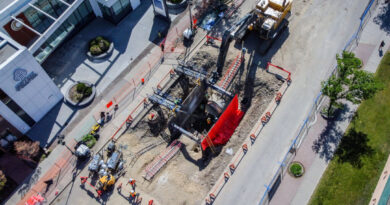The analysis of BHP’s Nickel Shutdown predicts a challenging future ahead.
Competition from Asia has caused the price of nickel to plummet from $US30,000 a tonne to $US16,000 a tonne, rendering BHP’s nickel operations unprofitable.
Analysis
BHP has decided to mothball its WA nickel mines and processing plant for a minimum of three years due to an “oversupply in the global nickel market.”
The root cause of this decision, however, stems from intense competition from Indonesia, which has saturated the market with lower-grade metal, increasing their share from 6 percent to 53 percent of the world’s nickel production.
This competition is fueled by the development of new processing technology by Indonesian and Filipino producers, in collaboration with Chinese steelmakers, allowing them to offer nickel at a 30 percent lower price than Australia.
Despite forecasts by the World Bank and others predicting a 6 percent increase in nickel prices by 2025, the price disparity will persist, making BHP’s product uncompetitive.
Another factor impacting demand is the decline in electric vehicle sales, where nickel is a key component, leading to Tesla laying off 10 percent of its staff in April.
“Like others in the Australian nickel sector, we have been unable to overcome significant economic challenges due to a global oversupply of nickel,” said Geraldine Slattery, President of BHP’s Australian operations.
On July 11, the company projected an underlying EBITDA loss of $450 million (US$300 million) in the 2024 financial year from its WA Nickel business, along with a non-cash impairment charge of US$0.3 billion.
The suspension of operations, affecting 1,600 workers and contractors, is set to commence in October, covering various facilities such as the Kwinana nickel refinery, Kalgoorlie smelter, and major mines.
Despite redeploying staff, some redundancies are anticipated. BHP plans to launch a $20 million community fund to aid impacted towns and intends to invest approximately $450 million annually to potentially restart operations in the future.
Suspension Will Affect 1,600 Workers and Contractors
This will impact not only 1,600 workers but also many contractors and suppliers who service the mining sector.
The decision wasn’t a shock, as the miner announced earlier this year that its Nickel West operations were under review and warned of a potential suspension due to falling market prices.
BHP’s WA Nickel Assets President Jessica Farrell pledged on July 11 that “anyone in our frontline that wants a job with BHP has a job with BHP,” indicating that staff would be redeployed.
However, some redundancies are also expected to occur.
The company will set up a $20 million community fund to support the towns affected by the closures.
It will invest around $450 million a year to enable the facilities to be restarted in the future. It will review the situation in February 2027, though Ms. Farrell said the company expects “oversupply persisting into the latter part of this decade.”
Western Australian Premier Roger Cook said the state government would “do whatever it takes to support those workers and our regional communities through this difficult time.”
Federal Minister Calls Decision ‘Disappointing’
Federal Resources Minister Madeleine King called the decision “disappointing” and said it had worked with BHP and the broader nickel sector on policy responses to support ongoing production.
“We added nickel to the critical minerals list in February, making nickel projects eligible for consideration under the $4 billion critical minerals facility. We also announced the critical minerals production tax incentive in the May Budget,” she said.
“However, it is clear that the scale of commercial difficulties Nickel West faces due to developments in global nickel markets has led to the temporary suspension announced by BHP today.”
The decision means Australia’s nickel operations will shrink to Nova operations and Glencore’s Murrin Murrin mine, reducing production in Australia from over 150,000 tonnes last year to around 60,000 tonnes.
BHP shares were down 0.94 percent to $43.15 in early trading on the ASX on July 12, and they have fallen 2.16 percent over the last 12 months.
Recovery May Be Difficult
Many smaller nickel miners have already been forced out of business by competition from Indonesia.
First Quantum and POSCO’s Ravensthorpe, Wyloo’s Kambalda operations, Panoramic’s Savannah and the Avebury mine in Tasmania have all closed, while IGO is running its Forrestania mines towards the end of their lives, and has paused construction of its subsequent significant nickel development, Odysseus.

The commodity’s price has fluctuated substantially, depending on global market conditions.
Following the collapse of the Soviet Union, nickel exports increased dramatically, dropping the price to below production costs in the mid-1990s and forcing producers to curtail their output.
Prices then increased again, up to US$52,179 per metric ton in May 2007.




